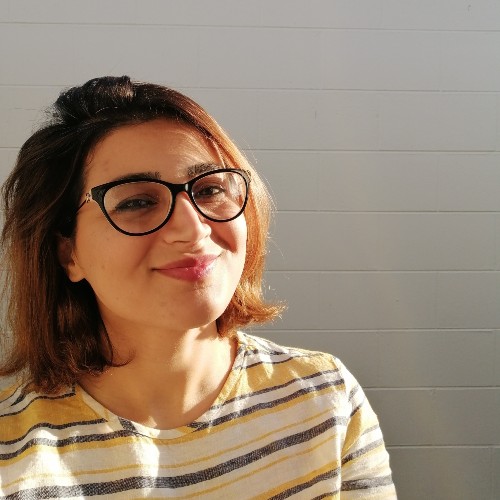
Master of Architecture – MArch
Expand your knowledge and skills with specialist study into your area of architectural interest.
The people you work with and learn from are an important part of your studies. Learn who the potential supervisors are for the MArch.
Academic staff
- Daniel BrownDaniel Brown—Storm and flood proofing urban communities, sustainability and resilience, narrative architecture and cultural practices, architecture of Southeast Asia and the Pacific Rim
- Dr Nilesh BakshiDr Nilesh Bakshi—The broader discourse about the identification and values of sustainable design and communities. Creating a link between human behaviour and sustainable practice or lack thereof. Research specifically looks at sustainable technologies and design, as well as environmental design integration and application of sound construction technologies ethically within the built environment
- Emina PetrovicEmina Petrovic—Sustainable building materials, toxicity of building materials, perception of sustainability in architecture, and history of interdisciplinarity in architecture
- Fabricio ChiccaFabricio Chicca—Sustainability in urban areas, tangible and intangible values of the real estate market, BIM (Building Information Modelling), urban agriculture, project management
- Michael DuddingMichael Dudding—Architectural history (20th century), New Zealand architectural history, oral history, architecture for the elderly
- Dr Morten GjerdeDr Morten Gjerde—Urban planning and design including long-term management of the built environment, medium density housing—amenity and design outcomes, uses of concrete in the built environment
- Derek KawitiDerek Kawiti—Parametric design methods, generative digital modelling, digital heritage and ‘low’ and ‘high’ tech digital fabrication, implications of digital technologies in the convergence with indigenous traditional knowledge
- Dr Sam KebbellDr Sam Kebbell—Creative practices and their potential to impact cities and landscapes
- Dr Rebecca KiddleDr Rebecca Kiddle—Decolonising Aotearoa New Zealand Cities + Indigenous place identities, Māori housing and urban design, spatial justice, rangatahi (youth) involvement in built environment decision-making, urban and suburban spaces for community building and third places, the politics of the production of place
- Adele LeahAdele Leah—Environmentally and socially sustainable design, architectural education and practice, material reuse and self build, participatory design tools and methods
- Guy MarriageGuy Marriage—Urban space, significance of social space, construction technology, prefabrication technology, sustainable building technology, New Zealand architectural history
- Bruno MarquesBruno Marques—Integration of indigenous methods in participatory design to foster landscape rehabilitation and enhance ecosystem services
- Prof Joanna Merwood-SalisburyProf Joanna Merwood-Salisbury—Architectural history in the 19th and 20th centuries, architectural theory, history and theory of interior architecture and design, public space, history of urbanism
- Christine McCarthyChristine McCarthy—Prison architecture, including: open prisons, prison history, New Zealand prisons, home detention
- Chris McDonaldChris McDonald—Nineteenth-century colonial town planning, town foundation in Australia and New Zealand, street patterns in New Zealand cities
- Jacqueline McIntoshJacqueline McIntosh—Sustainability in housing including issues in culture, construction innovation and disaster recovery; and architectural pedagogy, social constructivist theories of teaching and learning
- Tane MoletaTane Moleta—Architectural design, VFX and architectural visualisation including: virtual reality/mixed reality/ augmented reality, serious games, parametric design, architectural and design education
- Dr Maibritt Pedersen Zari Dr Maibritt Pedersen Zari —Sustainable architecture, biomimicry, wellbeing, regenerative development, climate change, biophilic design
- Prof Marc Aurel SchnabelProf Marc Aurel Schnabel—Virtual & augmented environments: digital heritage, collaborative digital design, social network learning; parametric & algorithmic modelling & simulation: BIM & CIM, urban form & thermal comfort, traffic & urban design (UC-Win Road), real-time simulation (FUZOR), intelligent cities; digital manga: digital architectural narratives and visualisation
- Robin SkinnerRobin Skinner—Postcolonialism and architecture, 19th century discourse, New Zealand architecture, Pacific architecture, design method
- Dr Jan SmitheramDr Jan Smitheram—Contemporary architectural theory and history; performance, performativity, affect, occupation; relationships between the body and interiors
- Mark SouthcombeMark Southcombe—Applied architectural thinking, design practice and teaching, research through the medium of design, prefabricated housing, collective urban housing
- Simon TwoseSimon Twose—Connections and transferences between practice and theory, architectural representational media, design process, relation between the body and the built, architectural practice as an experimental activity and built projects as a form of critical practice
- Dr Peter WoodDr Peter Wood—Architectural theory, visual literacy and architecture, New Zealand architecture, architectural education, architectural drawing, the house
- Hans-Christian WilhelmHans-Christian Wilhelm—Joint, detail and pre-fab construction concepts as design drivers across different times and scales, in architecture and furniture design. Housing, including performance enhancements, rejuvenation and refurbishment of housing complexes, innovation in housing typology.

Masi Shiran
Graduate, Master of Architecture
I feel really privileged to have developed my research alongside like-minded, inspirational people, both fellow students and academic staff, as well as people in the community.
Researching her passions
Masi Shiran’s Master’s research investigated a topic she’d been passionate about for some time—the role of architectural design in enhancing place attachment, the emotional bond between a person and place, for older adults in retirement communities.
“My research looked at retirement villages and how ‘ageing in place’ in this new environment could be made possible by enhancing place attachment through physical features of the environment,” says Masi.
Freedom to explore
“Housing and issues related to housing have always been a concern of mine. The Master’s programme gave me the freedom to explore this more serious topic in depth. With the number of elderly people increasing worldwide, it is time to explore housing options for this age group and specific ways we can help them ‘age in place’.”
Working with retirement communities in Wellington for her research gave Masi the valuable opportunity to “help elderly people by being their voice”.
“With a growing ageing population, we need to explore effective housing solutions that help people aged 65-plus achieve wellbeing and independence,” she says. “I feel really privileged to have developed my research alongside like-minded, inspirational people, both fellow students and academic staff, as well as people in the community.”
Pathway to PhD
For Masi, the research skills she gained while studying her Master’s have put her on the pathway to a PhD, something she wants to pursue in the near future.
Previous
RequirementsNext
How to apply

